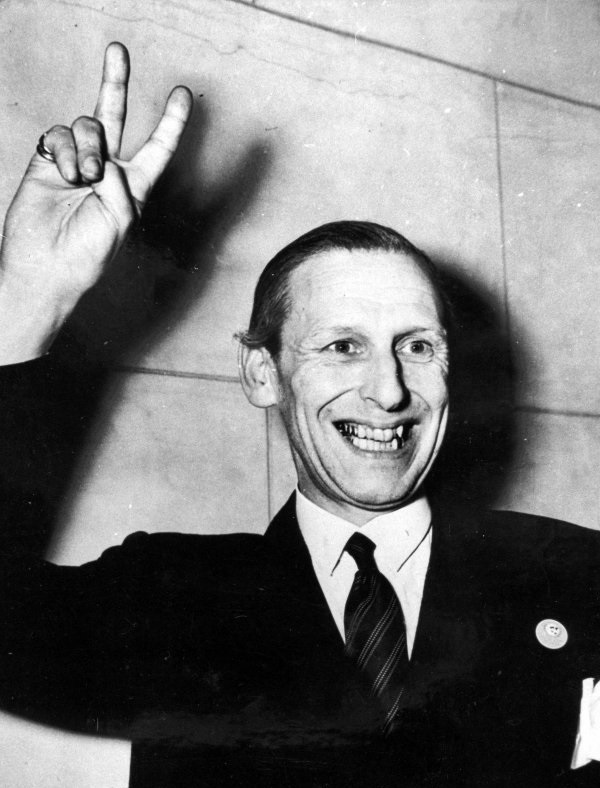The name Victor de Laveleye might not mean anything to most people. But he is something of a war hero in Belgium, mainly due to a radio broadcast he made on 14 January 1941.
A Brussels lawyer and local councillor, Victor de Laveleye moved to London when the German army invaded in 1940. He began working as a radio announcer for the BBC’s Radio Belgique service.
In his radio speech, he called on Belgians to use the letter V as a symbol of resistance. He chose V as it was the first letter of victoire (victory) in French, vrijheid (freedom) in Dutch and, conveniently, the first letter of Victor’s own name. Within a few weeks, Vs started to appear in chalk on walls in Belgium and the Netherlands as a symbol of resistance.
Encouraged by the success, the BBC launched a ‘V for Victory’ campaign. By July 1941, the V-sign had spread across occupied Europe, leading to Winston Churchill’s defiant gesture (often with a cigar between the raised fingers).
Victor’s V-sign was later adopted by President Eisenhower, who would raise both arms while making the V-sign. President Nixon sometimes used it to symbolise victory in the Vietnam War, but then the anti-war movement took it over in the 1960s to symbolise peace.
Since then, the V sign has been used by the Beatles, the Solidarity movement in Poland, the Iranian Green Revolution and the Flemish nationalist party. It also turns up in millions of selfie photos in Japan, China and South Korea.
But it all started with a BBC radio broadcast by a forgotten Belgian from Saint-Gilles.
Derek Blyth’s hidden secret of the day: Derek Blyth is the author of the bestselling “The 500 Hidden Secrets of Belgium”. He picks out one of his favourite hidden secrets for The Brussels Times every day.

